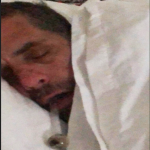Post
by Velbor » Thu Jul 24, 2008 2:12 pm
It has often been asked whether or not software is either necessary or useful, as opposed to simply recording information from a data-capable xPAP machine’s LCD screen. This is an edited compilation of several of my previous posts; a long but hopefully a useful, informative and comprehensive summary.
My comments focus primarily on ResMed AutoPAP machines. There are a number of forum members who, for a variety of reasons, don’t think much of ResMed machines in general, and who, for reasons sometimes valid and sometimes superfluous, disparage ResMed software. Certainly, ResMed software is imperfect, occasionally frustrating, and does not provide many types of information which I would like to see. But I know of NO perfect software for ANY application, CPAP or otherwise.
Much here is also applicable to other machine and software brands. For Respironics in particular, machine and software give 90th centile data, rather than 95th centile information as ResMed does.
===== What the LCD screen provides
From a data-capable ResMed machine's LCD you get six datum for each night:
--- AHI, AI, HI,
--- machine time,
--- 95th centile pressure, and
--- 95th centile leak.
All that AHI, AI and HI tell you is how many times per hour you have respiratory events. Such simple metrics do not adequately summarize a complex situation. They do not tell you whether each event lasts 10 seconds, or 50 seconds. They do not tell you whether most events are clumped together (more likely to lead to oxygen desaturation and cardiovascular issues) or whether the events are spread out (more likely to cause multiple disruptions of sleep).
The 95th centile pressure is useful (primarily in an AutoPAP machine set “wide open”) for deciding on a starting point for a single constant CPAP pressure, or on a “better” lower-limit AutoPAP pressure. But it does not tell you what your “typical” pressure is through the night (median pressure) or how high the machine actually takes you (maximum pressure).
The 95th centile leak rate seems to me almost useless. Much more important is what your leak is doing “most of the time” (median leak), and whether your worst leak (maximum leak) exceeds the machine's capacity to maintain therapy.
The statistics provided by the LCD screen are a useful starting point, and can help to track the pattern of how you are moving, but I propose that they alone are quite inadequate to tell you where you actually are. The additional statistics provided by the software are not trivial, and neither are the "squiggly lines" of the graphs.
===== What software adds
With the software you will also get, in addition to the LCD screen data, five more numbers:
--- percent of total time in apnea,
--- median and maximum pressure, and
--- median and maximum leak.
With the graphics provided by the software, you will also be able to see visually WHEN during the night your apneas and hypopneas and leaks occurred, and the DURATION of each apnea event.
The additional statistics, and the time-relationship of pressure, leak and respiratory disturbance provided by the software, can be highly informative. Software will also give you multi-night values for ALL of the statistics for any continuous date range, which can be useful for "before" and "after" comparisons relating to any change which may have been made. Percent-time-in-apnea is a much better indicator of overall oxygen deprivation than is AI alone.
===== The limitations of LCD data
It’s very important to understand just what the 95th centile data does and does not provide, in contrast to the median and maximum.
Assume you're on the machine for 8 hours (480 minutes). Assume that for "most of the time" your leak rate is a minimal 0.04 L/s. Assume that for a one half hour period, you have turned your head in such a way that the mask is displaced. Assume that during that time, your leak rate is 0.40 L/s for 15 minutes, and 0.60 L/s for 15 minutes. The 95th centile value (the lowest value for the highest 24 minutes of leak) - what you will see on the LCD - will be 0.40.
What does that tell you? It does NOT tell you that "most of the time" - 7.5 hours - your leak was an excellent 0.04. This is what the median leak will indicate. Nor does it tell you that for 15 minutes, your 0.60 leak may have exceeded the machine's ability to compensate and maintain therapeutic pressure. This is what the maximum leak will indicate. What does the 0.40 tell you? I would suggest, almost nothing useful. But the "squiggly lines" on the software graph, with one sharp spike lasting just half an hour, will tell you almost everything! The software - additional statistics and graphics - makes all the difference!
Similarly for pressure (assuming an AutoPAP setting; for straight CPAP all pressure statistics will be the same). The 95th centile pressure, the pressure AT or BELOW which your machine was blowing for 95% of the time, is useful in a forward-looking perspective for setting new machine pressures, but provides little relevant CURRENT physiologic or therapeutic information. On the other hand, you DO want to know what your “typical” pressure was through the night (the median). And you DO want to know whether your actual maximum pressure is “bumping up against” your machine’s maximum pressure setting. Once again, the graphs will tell show you when, how long, and how often.
===== ResMed software
ResMed’s older AutoScan software is generally no longer being sold. AutoScan v5.7, the last version issued, supports S7 machines, and the initial S8 machine models with their ResScan data cards. It has the advantage of being able to export minute-by-minute data to Excel, a capability which the ResScan software sadly did not retain.
ResScan software is needed to deal with newer S8 II family machines, and some of the more complex BiPAP and SV machines. ResScan v3.3 and v3.4 do NOT run under VISTA, while v3.5 is VISTA compatible. You will need to be sure which software version supports your particular xPAP machine; v3.3 does NOT support the S8 II family.
ResMed also offers an add-on ResLink module, for both S7 and S8 machines (the units are different – be sure you get the right one!). The null modem cable (for S7) and the ResScan card (for S8 ) provide data on a minute-by-minute basis. ResLink provides data every few seconds. I have not found that the ResLink adds very much of value, unless you want and/or need pulse and PO2 data. Pulse and oximetry add several hundred dollars (think about $600-$800) to the base cost of the ResLink unit self (think about $200).
===== Concluding thoughts
How much information do you really need? Without the basic information – pressure, apnea and hypopnea indices, and leak – you (and your clinician) have almost no way of knowing whether you are receiving effective treatment (other than a change in your subjective daytime symptoms). Almost all of the experienced posters on this board agree that a data-capable machine is a minimum necessity, to get these data from the LCD screen. There is somewhat less unanimity regarding the necessity of software. Many sleep physicians aren’t interested in looking at nightly data, but they do want to see all of the summary statistics which software provides.
Remember also that for many of us, these metrics are HIGHLY variable from night to night. Whether from the LCD or from software, you need to be sure to collect sufficient data (I don't trust less than 20 observations under the same conditions) and carefully look at averages, medians, ranges, temporal trends (resulting from unidentifiable variables) and possibly other relevant (or irrelevant) statistics.
Remember also that the numbers themselves are NOT important! What is ultimately important is:
--- the restorative quality of our sleep,
--- our “restedness” or “awakeness” the following day, and
--- the cardiovascular consequences of inadequately treated sleep apnea.
The numbers only provide clues as to whether current xPAP treatment is adequate, and can be helpful in optimizing the treatment.
Ultimately, it comes down to your temperament, and the cost. Do you want to be a partner with your clinical professionals, or leave everything to them? How much is it worth to you to have how thorough an understanding of what’s going on each night, and over time? How much can you afford to spend? How prepared are you to interpret and understand the data? And above all, what are you going to DO with the data? What difference will it make in your decisions and actions? Will having data, or not having data, be more likely to make you crazy???
Velbor














